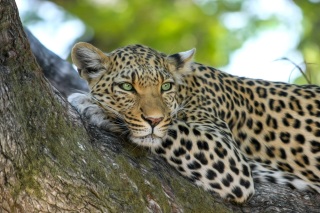It wasn’t even midday, and most of the male population of Tissamasharama was already drunk.
The monthly poya (full-moon) day was upon us again. Poya days are held sacred in Sri Lanka by the island’s Sinhalese Buddhists, who form the majority of the population, and are considered an occasion for religious contemplation, fasting and visits to the temple. Monks retire to their chapter houses to chant Buddhist scriptures and confess their sins, while little old ladies dress in their best white saris and visit the local shrine to pray and make offerings.
 The younger and more male section of the population, however, regard poya days principally as an excuse for a 24-hour drinking binge – the quiet sound of one half of the island settling down to worship and meditation is largely drowned out by the noise of the other half cracking open bottles of arrack and launching into alcohol-fuelled song. Sri Lankans love a party, and we had already seen a fair few local festivals, plus assorted weddings and birthday bashes, but for uninhibited, blood-curdling exuberance, nothing matched poya day in Tissamaharama – an occasion more reminiscent of a raucous Latin American fiesta than a Buddhist religious holiday.
The younger and more male section of the population, however, regard poya days principally as an excuse for a 24-hour drinking binge – the quiet sound of one half of the island settling down to worship and meditation is largely drowned out by the noise of the other half cracking open bottles of arrack and launching into alcohol-fuelled song. Sri Lankans love a party, and we had already seen a fair few local festivals, plus assorted weddings and birthday bashes, but for uninhibited, blood-curdling exuberance, nothing matched poya day in Tissamaharama – an occasion more reminiscent of a raucous Latin American fiesta than a Buddhist religious holiday.
Establishing ourselves in a lakeside restaurant, we settled down to observe the fun from a safe distance. As we watched, the crowd of local lads milling up and down the street suddenly burst into an exuberant medley of songs, delivered with enormous gusto (and unexpected tunefulness), accompanied by energetic rhythmic thumps on an empty petrol can. After about an hour they all started rushing about trying to rip each another’s sarongs off before jumping into the lake, splashing around crazily and trying to drown one another. By mid-afternoon every male in town under the age of forty seemed to be either drenched, insensible, or both. Those who still commanded the use of their legs jumped on their bicycles and rode unsteadily around the lake ringing their bells and bellowing at one another, while everyone else piled into minibuses and roared off to the shrine at Kataragama to pay their slurred respects to the Lord Buddha. An uneasy silence descended, broken only by the faint tinkling noise of people falling off bicycles, or the distant splashes of others tumbling into the lake.

oOo
Perhaps not surprisingly, we seemed to be the first people awake in Tissa the next morning, arriving early at the following morning at Yala National Park, the most famous reserve in Sri Lanka, celebrated for its elephants, birdlife, bears, crocodiles and, especially, its leopards. Our allotted guide, Sarath, may well have had excellent wildlife-spotting credentials, though these were somewhat obscured by the fact that – following the previous day’s celebrations – he appeared to be nursing a serious hangover.
We raced off into the park in a cloud of dust, whilst Sarath rubbed his temples, mumbling incoherently as we bumped past great flocks of brilliantly coloured birds and querulous monkeys, then subsiding slowly into a quiet stupour. Some time later a sudden squealing of brakes roused him from his slumbers. Sitting in the branches not five metres ahead a leopard regarded us with supreme disinterest, then descended gracefully from the branches and padded quietly off into the undergrowth, a superb flash of orange and black amidst the grey-green foliage.
 We congratulated ourselves smugly on our absurd good fortune. Our driver grinned like a Cheshire cat. Even Sarath managed a queasy smile. Buoyed by our unexpected success, I handed over a tip far larger than I had originally intended. Sarath looked at the banknote with bright eyes in which the promise of another hangover was already materializing, and staggered happily back to his village.
We congratulated ourselves smugly on our absurd good fortune. Our driver grinned like a Cheshire cat. Even Sarath managed a queasy smile. Buoyed by our unexpected success, I handed over a tip far larger than I had originally intended. Sarath looked at the banknote with bright eyes in which the promise of another hangover was already materializing, and staggered happily back to his village.
Published in Rough News, 2004

